| Oracle7 Server Tuning | Library |
Product |
Contents |
Index |
| Oracle7 Server Tuning | Library |
Product |
Contents |
Index |
The Oracle Server is a sophisticated and highly tunable software product. Its flexibility allows you to make small adjustments that affect database performance. By tuning your system, you can tailor its performance to best meet your needs.
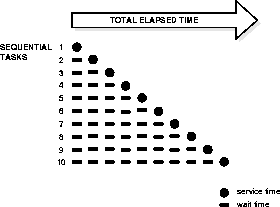
Sequential Processing of Multiple Independent Tasks
In this example only task 1 runs without having to wait. Task 2 must wait until task 1 has completed; task 3 must wait until tasks 1 and 2 have completed, and so on. (Although the figure shows the independent tasks as the same size, the size of the tasks will vary.)
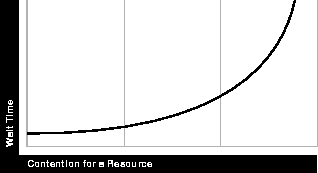
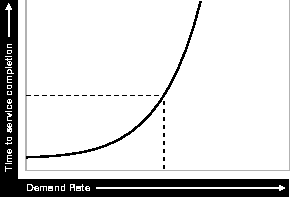
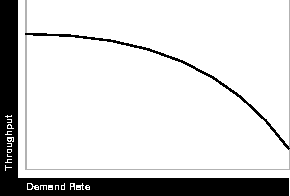
For example, if your system's busiest times are from 9:00 AM until 10:30, and from 1:00 PM until 2:30, you can plan to run batch jobs in the background after 2:30, when more capacity is available. In this way you can spread out the demand more evenly. Alternatively, you can allow for delays at peak times.
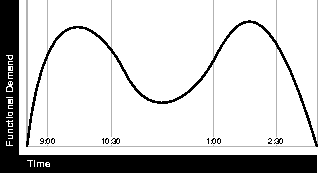
Adjusting Capacity and Functional Demand
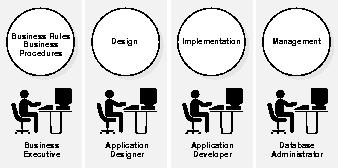
See Also: Chapter 3, "Diagnosing Performance Problems in an Existing System" for keys that can help database administrators (DBAs) to identify performance problems and solve them reactively.
When designing your system, set a specific goal: for example, an order entry response time of less than three seconds. If the application does not meet that goal, identify the bottleneck causing the slowdown (for example, I/O contention), determine the cause, and take corrective action. During development, you should test the application to determine if it meets the designed performance goals before deploying the application.
Tuning is usually a series of trade-offs. Once you have determined the bottlenecks, you may have to sacrifice some other areas to achieve the desired results. For example, if I/O is a problem, you may need to purchase more memory or more disks. If a purchase is not possible, you may have to limit the concurrency of the system to achieve the desired performance. However, if you have clearly defined goals for performance, the decision on what to trade for higher performance is simpler because you have identified the most important areas.
If a DBA should promise 1 second response time, consider how this might be interpreted by users. The DBA might mean that the operation would take 1 second in the database--and might well be able to achieve this goal. However, users querying over a network might experience a delay of 1 minute due to network traffic: they will not receive the response they expect in 1 second.
DBAs who are responsible for solving performance problems must keep a wide view of the all the factors that together determine response time. The perceived area of performance problems is frequently not the actual source of the problem. Users in the preceding example might conclude that there is a problem with the database, whereas the actual problem is with the network. A DBA must monitor the network, disk, CPU, and so on, to find the actual source of the problem--rather than simply assume that all performance problems stem from the database.
Ongoing performance monitoring enables you to maintain a well tuned system. Keeping a history of the application's performance over time enables you to make useful comparisons. With data about actual resource consumption for a range of loads, you can conduct objective scalability studies and from these predict the resource requirements for load volumes you may anticipate in the future.
See Also: Chapter 4, "Overview of Diagnostic Tools"
|
Prev Next |
Copyright © 1996 Oracle Corporation. All Rights Reserved. |
Library |
Product |
Contents |
Index |